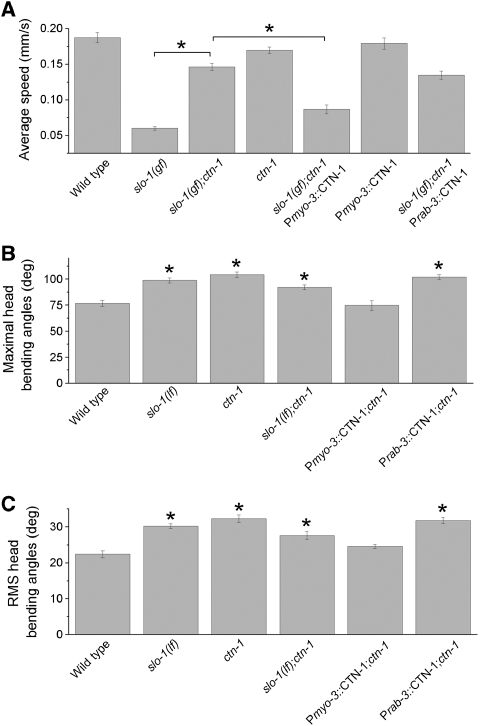Figure 4.
CTN-1 was required for SLO-1 function in body-wall muscle cells but not neurons. (A) The ctn-1(lf) mutant counteracted the inhibitory effect of slo-1(gf) on locomotion speed, and this effect could be reversed by expressing wild-type CTN-1 in body-wall muscle cells under the control of the myo-3 promoter (Pmyo-3) but not in neurons under the control of the pan-neuronal rab-3 promoter (Prab-3). (B, C) Quantification of the maximal head-bending angle (B) and root mean square (RMS) of head-bending angle (C). The ctn-1(lf) and slo-(lf) mutants showed increased head-bending angle, and the severity of this phenotype was nonadditive in the slo-1(lf);ctn-1(lf) double mutant. The abnormal bending phenotype of the ctn-1(lf) mutant could be rescued by expressing wild-type CTN-1 in muscle cells using Pmyo-3 but not in neurons using Prab-3. Data are shown as mean±s.e. The asterisk (*) indicates a statistically significant difference (P<0.01) for comparisons either between the specified groups (A), or between the wild type and a mutant strain (B, C). The number of worms in each group analysed was 20–30 for the data shown in (A) and 10 for the data shown in (B, C).

